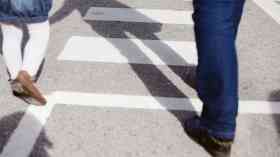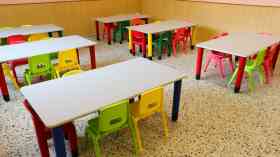A holistic environment created through play
 As the play landscape shifts and changes, so education must move alongside it to better accommodate the growing diversity of new equipment available. Play companies are actively making more open-ended play resources which can meet the demands of wider age groups and abilities to create playful experiences that combine added learning outcomes and exercise value.
As the play landscape shifts and changes, so education must move alongside it to better accommodate the growing diversity of new equipment available. Play companies are actively making more open-ended play resources which can meet the demands of wider age groups and abilities to create playful experiences that combine added learning outcomes and exercise value.
Devolved UK governments have recently been actively promoting the children’s right to play, in keeping with Article 31 of the United Nations Convention on the Rights of the Children which have major implications for education in the UK. The UN’s aim has been to ensure all UK governments concentrate their attention on play when deciding what might affect children’s play opportunities, such as the formation of the school day and how play can help meet specific learning outcomes.
Sadly, England still lags behind in this regard but a new campaign called the Right Year for Children – led by the Children’s Rights Alliance for England (CRAE) along with several charitable partners – is aiming to push children’s rights to the top of the parliamentary agenda. By promoting Article 31 it is hoped the essential links between learning and play will be highlighted so that playgrounds and classrooms can merge creating a holistic environment where children’s wellbeing and having fun remain in focus.
Loose-parts theory
One of the rising stars in educational play design is the theory of ‘loose-parts play’ which offers different kinds of play opportunities compared to fixed play space equipment. The loose-parts idea arose from the ashes of the Second World War after children were found to be playing in the shells of bombed-out houses where they created makeshift play spaces. This phenomenon in child-led play design, initially known as ‘junk playgrounds’, was first imagined in the 1930s by landscape architect, Carl Theodor Sorensen. By 1943 it was put into practice in Copenhagen during the German occupation after he was tasked with creating new play spaces for children to reduce juvenile delinquency rates.
The key feature Sorensen noted was the open-ended nature of these do-it-yourself play spaces that gave children more responsibility for how they played, enabling them to learn through building their own play spaces. The positive feedback from children and Sorensen’s inspired discovery of another way to design play spaces led to the terms ‘adventure play’ and ‘loose-parts play’ being adopted.
Interestingly, the situation in Copenhagen was paralleled in wartime Britain and repeated in the 1970s. Brownfield sites in impoverished areas became playgrounds for children who built dens and odd structures from junk and waste materials left behind. Now, this movement has begun to catch on again both in and out of schools with disused land being turned over to communities as playable space for children.
New approaches
Encouraging children to be creative when they play has long been at the heart of the play industry; and the lessons learnt from the bomb-sites, junk playgrounds and loose-parts play is driving companies to embrace new approaches to educational play. Some have responded with pod-based systems containing a variety of objects loosely related to randomly found items. Each of these objects has a unique colour, shape and properties, which mean they can fulfil several functions in play while also representing everyday objects.
These systems have the advantage of flexibility and any number of permutations that can be adopted. Indeed, children are limited only by their imaginations. Other loose-parts systems are more kit-focused or often correspond to more uniform, mathematical shapes which interlock and are ideal for building structures.
Both kinds of loose-parts systems are slightly different but both offer immense educational value when used to their full potential as part of a lesson. The children might be asked to build a spaceship in one moment, and in the next to create an obstacle course to run around. Many companies also offer learning resources such as lesson plans that advise teachers on possible uses of loose-parts play equipment to achieve direct learning outcomes; also providing uniform sets of play parts gives an added dimension with colour and shape recognition.
The beauty of loose-parts play is that it works well alongside existing school play structures, enhancing the flexibility of the systems and available space within a playground. The parts can be used pictorially, to map out an image of a spaceship or a monster; or more structurally, with one school using a loose-parts system to create make-shift air raid shelters when learning about the London Blitz in the Second World War. So the learning outcomes have come full circle from the original adventure play sites.
Play spectrum
There are other skills that play encourages that are not strictly school-learning outcomes and in some respects cannot be ‘taught’. This added element of challenge comes from more focused play equipment such as fitness trails, which can be made from loose-parts or installed ready-made. These are very flexible systems where children are encouraged to form a game around the equipment that can alter which skills are being practised. This gives a competitive edge to the lesson and helps children to learn teamwork and cooperation skills and can be a great primer for sport.
However, one of the most important methods of sustained learning, where children are constantly challenged, is through the use of different kinds of educational equipment. Some play systems can fulfil specific needs. For example, a sand-and-water panel take the principles of sand pits and put both materials through cogs, ramps and wheels. This helps children to learn about natural materials and how they move and interact, giving them a grounding in basic physics.
At the other end of the play spectrum there are fitness trails, a kind of obstacle course using beams for children to move from balancing point-to-point, improving coordination skills. This more active style of play can be used by children of all ages; the balancing points can be shifted to make a longer or shorter course and games can be formed around team-building or time challenges.
New schools, new opportunities
The British school system is currently undergoing radical changes, so there are more opportunities for schools to think independently about how much play they incorporate into their lessons. Changes in funding structures – with limited budgets being handed down from local education authorities to individual schools – has created more spending freedom as each school is free to choose their own budget priorities within the school business plan.
Also, as academies and free schools were introduced, they have been able to set their daily agenda with the structure of lessons and even the length of a school day being subject to change. This new freedom of decision-making means that play times can be stretched or blended into lessons. Giving children the opportunity to play outside more can also increase concentration levels once they return to the classroom environment, enabling children get to play and learn more.
With the long-term goal to make outdoor learning in schools equally as valuable as lessons in the classroom, the future of play should be focused on hitting targets and having fun. The advantage of using outdoor spaces throughout the year is that it gives children access to seasonal weather to learn about changing environments, as well as giving them the opportunity to be creative and have more responsibility over how and where they should play.
Written by Association of Play Industries
A day in the Life
Here’s how an early-years school day with a greater emphasis on play might look:
8am-9am: Playtime or breakfast club in the morning – an energetic and healthy start to the day when kids are still full of energy
9am-10am: Bell goes, into the classroom for first lesson or to assembly for news.
10am-11am: Drawing and colouring-in
11am-11.30am: Break time slightly longer than usual, then straight into a play-based lesson
11.30-12.30: first half of the lesson focuses on gathering different kinds of leaves, children then return to the classroom to draw and discuss different kinds of leaves.
12.30-1pm: Lunch/Free time
1pm-2pm: Classroom – going over themes from earlier in the day, expanding on science behind a leaf
2pm-3pm: outdoors/indoors – using loose-parts for role play, with several scenarios that keep changing from pirates to outer space, back to the earth and into jungle
3pm-3.30pm: preparing for home time
For more information
www.api-play.org
Latest News
19/12/2025 - 09:54
The Education Committee has expanded its ongoing inquiry into the early years sector to examine how safeguarding can be strengthened in early years settings.
18/12/2025 - 09:25
The UK will be rejoining the Erasmus programme in 2027, following a package of agreements with the EU.
17/12/2025 - 09:31
Ofqual has fined exam board Pearson more than £2 million in total for serious breaches in three separate cases between 2019 and 2023 which collectively affected tens of thousands of students.
16/12/2025 - 09:19
The average funding rates will increase by 4.3% for under 2s, and by almost 5% for 3-and-4-year-olds.
15/12/2025 - 10:30
Local colleges are set to receive £570 million in government funding to expand training facilities in areas such as construction and engineering.







